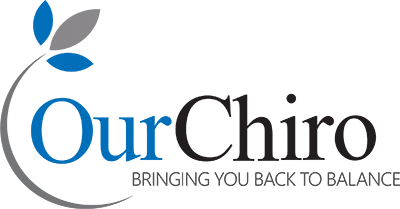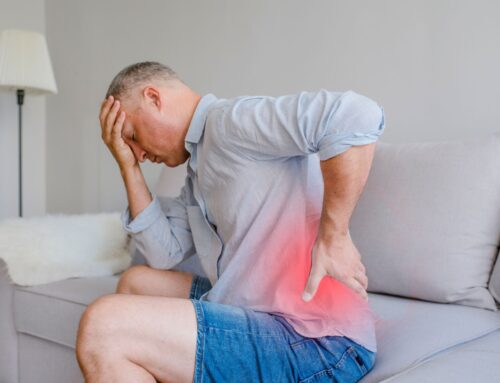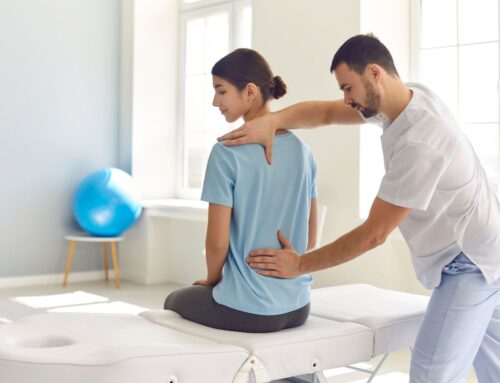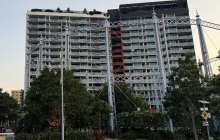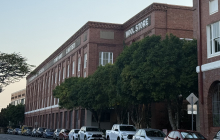
As a common issue in our modern, often sedentary world, upper back pain can cause significant discomfort and tension, impacting everything from your work productivity to your quality of sleep. This area, known as the thoracic spine, is a crucial part of your body’s structure and is frequently subjected to stress from daily activities.
This fact sheet is designed to provide you with an in-depth understanding of upper back pain, its common causes, and how chiropractic care may offer a pathway to relief and better health. In this article, Dr. Simon Nash (Chiropractor) discusses the primary causes of upper back pain and the various, effective approaches a chiropractor might take to help with the symptoms.
Please note: The information provided in this article is for general knowledge and informational purposes only, and does not constitute medical advice. It is essential to consult with a qualified healthcare professional for a diagnosis and personalised treatment plan.
Table of Contents
- Understanding Upper Back Pain
- Common Causes of Upper Back Pain
- The Role of Posture and Ergonomics
- Chiropractic Assessment and Imaging
- Chiropractic Treatment for Upper Back Pain
- Understanding the Healing Timeline
- Frequently Asked Questions (FAQs)
- Book a Consult with Our Chiro Brisbane
- References
- Video Transcript
Understanding Upper Back Pain
Upper back pain is typically felt in the area between the neck and the lower back, where the twelve vertebrae of the thoracic spine (T1 to T12) are located. This region connects to the rib cage, making it less flexible than the cervical (neck) or lumbar (lower) spine, but also highly susceptible to muscle tension and joint dysfunction.
“Upper back pain is something that we see every day in the clinic,” states Dr. Nash, highlighting the prevalence of the issue. Unlike the lower back, which is primarily designed for large movements, the upper back is built for stability to protect the vital organs of the chest. When this stability is compromised by poor habits or injury, pain can quickly arise. The discomfort can manifest as a dull ache, a sharp, stabbing sensation, or a persistent stiffness that makes deep breathing or rotation difficult.
Common Causes of Upper Back Pain
Identifying the cause is the first step toward effective management. Dr. Nash points to a few major culprits for the pain he sees daily at Our Chiro Brisbane:
1. Postural Stress and Ergonomics
In today’s age, the overwhelming cause of upper back pain is related to how we spend our time. “It’s typically in this day and age caused by postural stuff,” explains Dr. Nash. Prolonged periods of sitting, whether driving or working at a desk, force the body into a rounded shoulder, forward-head posture. This position places immense strain on the muscles and ligaments of the upper back and neck.
“A lot of people that sit or drive a desk all day typically have pain up and around this area and the shoulders,” he notes. This consistent strain leads to muscle fatigue and eventually, the painful tension that patients report.
2. Muscular Tension (The Trapezius Muscle)
A significant amount of pain in the upper back and shoulders is due to tension in the large muscles that support the area, particularly the trapezius muscle. This diamond-shaped muscle extends from the base of the skull, across the shoulders, and down the middle of the back.
Dr. Nash often observes this issue, saying, “We usually see a lot of muscle tension through the upper back. So the trapezius muscle usually gets quite irritated through there.” This tension is the body’s way of guarding against the poor posture it is continually subjected to.
3. Facet Joint and Rib Dysfunction
While muscle strain is common, the underlying joints can also be a source of pain. The facet joints are small joints located at the back of each vertebra that allow for movement. The thoracic spine is also unique because the ribs articulate with the vertebrae.
“We also see the facet joints and the ribs that articulate around that area and they can get a bit dysfunctional as well,” says Dr. Nash. When these joints or rib connections become restricted or irritated, it can cause a sharp, localised pain that is often mistaken for a muscle knot. This dysfunction can impact breathing and movement dramatically.
4. Lifting and Physical Strain
While less frequent than postural causes, physical activity, such as lifting heavy objects or picking up children, can lead to acute episodes of upper back pain. This type of strain often involves a sudden overload on the muscles or a minor sprain of the ligaments surrounding the joints.
The Role of Posture and Ergonomics
To truly address upper back pain, the environmental factors contributing to the problem must be evaluated. Poor ergonomics at a computer workstation, such as a monitor that is too low or a chair that lacks proper lumbar support, perpetuate the cycle of pain. Even the simple act of looking down at a phone can place the equivalent weight of a bowling ball on the neck and upper back.
The link between poor posture and pain is well-established in clinical research. While one study primarily focused on the lower back, its findings highlight a critical principle: changes in postural angles, such as those that occur when slouching, can significantly influence the incidence of spinal pain. (Powers et al., 2012)
“We need to assess why you’re getting that upper back pain, whether it is an ergonomic thing or whether it is more of an irritation from lifting or carrying something,” Dr. Nash explains. By correcting these habits, the body can maintain the alignment achieved through treatment.
“When you come into the clinic and we have a look at the reason you’re getting upper back pain, we might send you out for an X-ray if we need to or other further imaging. It could even be an MRI if necessary.”
Chiropractic Assessment and Imaging
When you visit Our Chiro Brisbane, the process begins with a thorough consultation and physical examination. This is crucial for distinguishing between common muscular tension and a more complex structural issue.
Dr. Nash highlights the comprehensive nature of the initial assessment: “We need to assess why you’re getting that… upper back pain.”
In some cases, further diagnostic tools may be needed. “When you come into the clinic and we have a look at the reason you’re getting upper back pain, we might send you out for an X-ray if we need to or other further imaging. It could even be an MRI if necessary.” This commitment to accurate diagnosis ensures that the treatment plan is specifically tailored to the underlying cause, whether it is a simple muscle strain or a complex joint issue.
Chiropractic Treatment for Upper Back Pain
A chiropractor’s approach is multi-faceted, aiming not just to relieve the pain, but to restore the normal biomechanical function of the thoracic spine. The treatment plan typically involves a combination of techniques:
1. Restoring Joint Function
For issues related to the facet joints and ribs, Dr. Nash utilises gentle, targeted methods to improve movement.
“We will use some adjustments, some manual adjustments, some mobilisation techniques to help restore the biomechanical function to the upper back and the thoracic spine, which helps us get out of pain,” he confirms.
These adjustments help to gently relieve pressure on the joints, allowing them to move more freely and reducing the irritation that contributes to pain. Research supports this approach, with a systematic review in the Journal of Manipulative and Physiological Therapeutics suggesting that spinal manipulation, along with exercise, can be effective for reducing pain and improving function in patients with chronic mechanical neck and upper back pain (Bronfort et al., 2004).
2. Addressing Muscle Tension
Since muscle tension is a primary cause, soft tissue work is a critical component of the treatment.
Dr. Nash notes, “We will use a range of different techniques, soft tissue techniques, needling or taping techniques to help alleviate that pain through the thoracic spine.”
Dry needling can be used to release stubborn trigger points within the trapezius and surrounding muscles. Taping techniques (such as Kinesio taping or rigid taping) can provide support to the fatigued muscles and encourage better postural alignment during the recovery phase.
3. Rehabilitation and Prevention
A core tenet of chiropractic care is empowerment through education and exercise. Patients are often prescribed specific rehabilitation exercises to strengthen the supporting muscles, correct postural imbalances, and prevent future recurrences.
“We will then work out a treatment plan to help get you out of pain. Sometimes that treatment plan can be quite short, but if it’s more of a chronic problem, that might be a little bit longer.”
Understanding the Healing Timeline
Patients often ask how long it will take to feel better. The answer depends on whether the issue is acute (sudden onset) or chronic (long-standing).
As Dr. Nash explains, “Sometimes that treatment plan can be quite short, but if it’s more of a chronic problem, that might be a little bit longer.” He provides a positive outlook for many cases, noting, “But typically over about 4 to 6 weeks, we see most orthopaedic tissue healing and function restored to the joints.” Consistency with treatment and adherence to prescribed home exercises are vital factors in achieving a swift and successful recovery.

Frequently Asked Questions (FAQs)
Q1: Is upper back pain usually caused by a ‘slipped disc’ like in the lower back? A: Disc herniations are much less common in the thoracic spine than in the lumbar spine due to its structural stability. Upper back pain is more frequently related to muscular tension, joint dysfunction (facet joints/ribs), and poor posture.
Q2: What is the single most important thing I can do at my desk to prevent upper back pain? A: The most important thing is to take frequent breaks. Stand up, stretch, and move every 30 to 60 minutes. Proper monitor height (top of the screen at eye level) is also critical to prevent a forward-head posture.
Q3: Is it better to use heat or ice for my upper back pain? A: Generally, ice is recommended for acute, sharp pain or inflammation (within the first 48 hours). Heat is more useful for chronic, stiff, or achy pain, as it can help relax tense muscles. Your chiropractor can give you specific advice.
Q4: Will I need to have my back “cracked” (spinal adjustment) to fix my pain? A: Not necessarily. Chiropractic treatment is tailored to the individual. Techniques may include gentle mobilisation, soft tissue therapy, dry needling, and rehabilitation exercises. Adjustments are only used when clinically appropriate and with your consent.
Q5: How can chiropractic help with the rib joints Dr. Nash mentioned? A: Chiropractors are highly skilled in assessing and treating rib joint dysfunction. Gentle manipulation or mobilisation techniques are used to restore proper movement to the rib head where it meets the thoracic vertebrae, which can significantly relieve sharp, localised pain.
Q6: If my job requires me to sit all day, can my upper back pain ever truly go away? A: Yes, it can. While your job contributes to the stress, a combination of chiropractic care to restore function, ergonomic corrections, and a consistent home exercise program can help your body adapt and maintain a pain-free state.
Q7: Is upper back pain linked to headaches? A: Yes, very often. Tension in the upper back and neck muscles (like the trapezius) can refer pain to the head, leading to cervicogenic headaches or tension-type headaches. Treating the upper back is often key to resolving these headaches.
Book a Consult with Our Chiro Brisbane
If you are struggling with persistent stiffness, nagging aches, or sharp pain in your upper back, we understand how draining and frustrating it can be. Constant discomfort can make focusing on work, getting a good night’s sleep, or simply relaxing with family incredibly difficult. You don’t have to endure this pain.
At Our Chiro Brisbane, we are dedicated to helping you find lasting relief by identifying and treating the root cause of your upper back pain. Dr. Simon Nash and our experienced team use a combination of evidence-based techniques, including specific manual adjustments, soft tissue therapies, and personalised rehabilitation exercises, to restore function and improve your quality of life.
Take the proactive step towards a more comfortable, active life. Book an appointment for a comprehensive Initial Consultation to start your recovery journey today. If you have been in an accident that has caused your pain, we also offer specific services like WorkCover or Insurance Consults.
References
- Bronfort, G., Haas, M., Evans, R. L., & Bouter, L. M. (2004). Efficacy of spinal manipulation and mobilization for low back pain and neck pain: a systematic review and best evidence synthesis. The Spine Journal, 4(3), 335–356. https://doi.org/10.1016/j.spinee.2003.06.002
- Powers, C. M., Bolgla, L. A., Callaghan, M. J., Collins, N., & Sheehan, F. T. (2012). Patellofemoral Pain: Proximal, Distal, and Local Factors—2nd International Research Retreat, August 31–September 2, 2011, Ghent, Belgium. J Orthop Sports Phys Ther, 42(6), A1–A54. https://doi.org/10.2519/jospt.2012.0301
Video Transcript
Upper back pain is something that we see every day in the clinic. Um, it’s typically in this day and age caused by postural stuff. So, a lot of people that sit or drive a desk all day um typically have pain up and around this area and the shoulders. Um, other other reasons you would have upper back pain is from maybe lifting um or picking up kids and things like that. Uh, we usually see a lot of muscle tension through the upper back. So the trapezius muscle uh usually gets quite irritated through there. So we will use a range of different techniques, soft tissue techniques, needling or taping techniques uh to help alleviate that pain uh through the the thoracic spine. We also see the facet joints and the ribs that articulate around that area and they can get a bit of dysfunctional as well. And so we will use uh some adjustments, some manual adjustments, um some mobilisation techniques to help restore the biomechanical function to the upper back and the thoracic spine, which helps us get out of pain. Um and it’s quite easy and simple to treat. When you come into the clinic and we have a look at the reason you’re getting upper back pain, um we might send you out for an X-ray if we need to or other further imaging. could even be an MRI if necessary. Um, we need to assess why you’re getting that that that upper back pain, whether it is an ergonomic thing or whether it is more of a an irritation from lifting or carrying something. Um, we will then work out um why that’s obviously we’ve worked out why that’s happening and then from there we’ll work out a treatment plan to help get you out of pain. Sometimes that treatment plan can be quite short, but if it’s more of a chronic problem, uh that might be a little bit longer. But typically over about 4 to 6 weeks, we see most orthopedic tissue healing and function restored to the joints.
